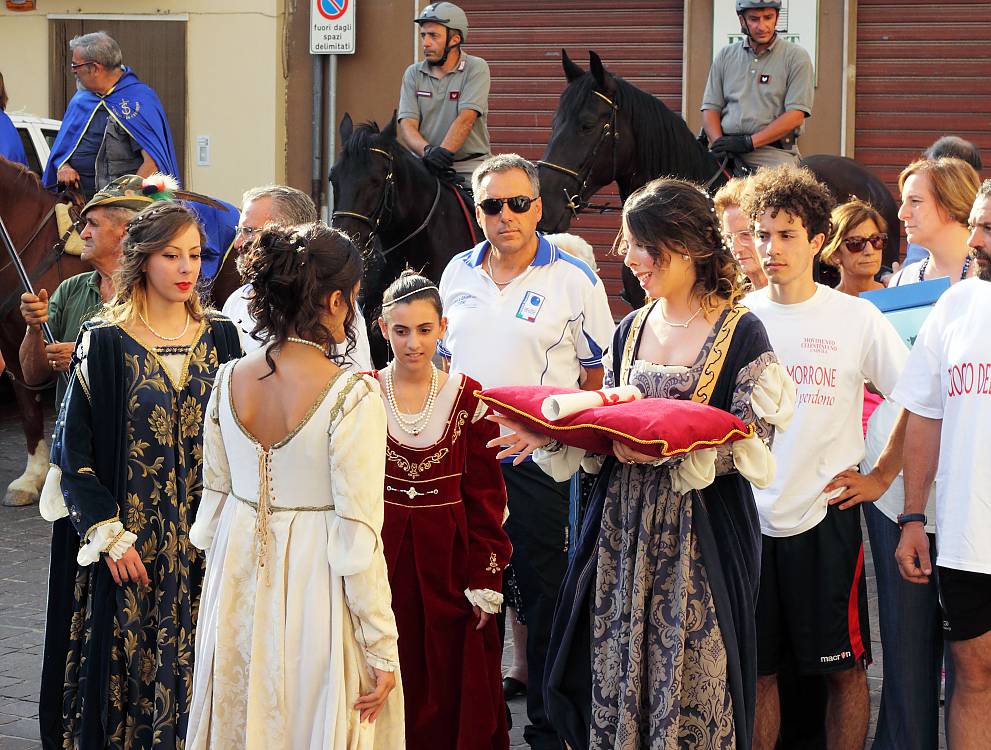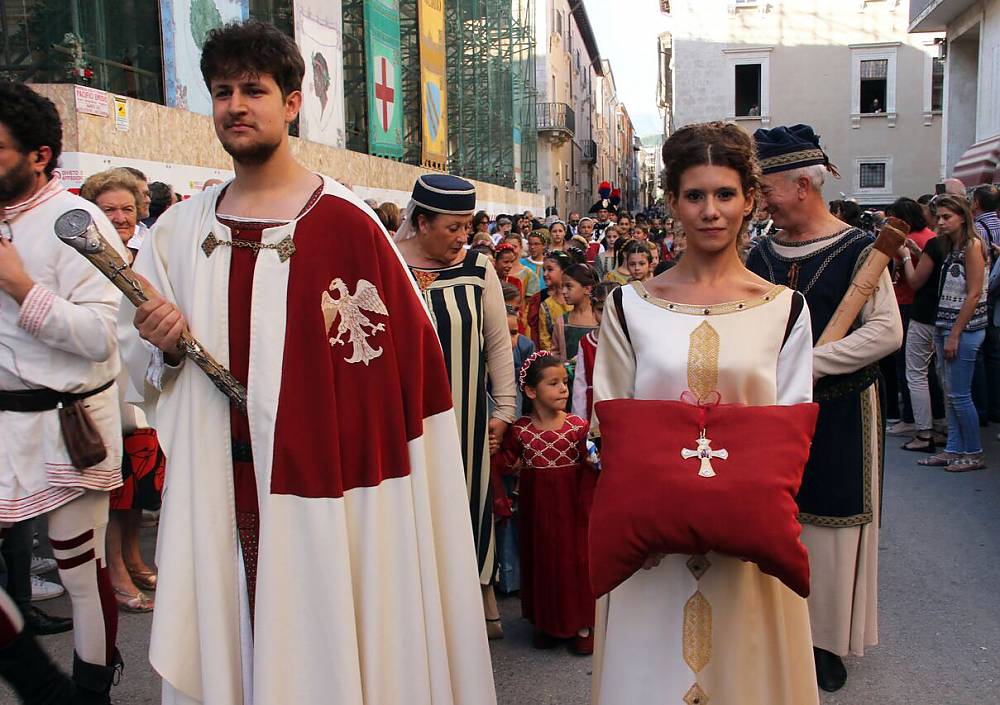Inscribed in 2019 (14.COM) on the Representative List of the Intangible Cultural Heritage of Humanity
1.1 Description of the element
The Celestinian forgiveness celebration was inspired by Pope Celestine V, who issued a historical ‘Bull’ as an act of partnership among local populations. Taking place in the city and province of L’Aquila, the tradition comprises a set of rituals and celebrations transmitted uninterruptedly since 1294. The practice conveys a sense of continuity and cultural identity for the whole community. The ‘Forgiveness Walk’ opens with the lighting of the ‘Fire of Morrone’ and its descent, accompanied by a candlelight procession. The procession proceeds along a traditional itinerary marked by the lighting of tripods in each of the twenty-three villages involved, where the mayor signs a parchment recalling the Bull’s symbolic values. The community gathering ends on 23 August in L’Aquila with the lighting of the last tripod. Drums, clarions and flag bearers enliven and mark the rhythm of the Parade, which involves 1000 citizens dressed in traditional costumes. Participants walk along with the three main characters – the ‘Lady of the Bull’, the ‘Young Lord’ and the ‘Lady of the Cross’ – symbolizing the traditional values of the celebration: hospitality, solidarity and peace. The meanings and traditional practices of the element are transmitted through tales told at home, in schools and in community gathering places, and the community’s constant participation in the celebration has ensured its viability over time.
1.2 Geographical location and Range of the element:
Italy
The Celestinian Forgiveness takes place, since its origins, in the city and province of L’Aquila, the capital of the Abruzzo Region. The Celebration rituals, which make the element a living intagible cultural heritage, involve a large area, following the traditional itinerary called the “Forgiveness Walk” (over 80 Km of territory). It starts on August 16th from the Hermitage of Celestine of St. Onofrio, at the foot of the Morrone mountain near Sulmona, involving many villages of the Valle Subequana (Pratola Peligna, Fontecchio, Fossa) and ending in the centre of L’Aquila on August 23rd.
The “Historical Bull Parade”, the climax of the Celebration rituals, crosses a topographical space of the city centre from the Town Hall Square to the Basilica of St. Maria of Collemaggio. In the days from August 23rd to 29th the entire urban context is involved in the Celebration, including squares, streets, buildings, monumental works, and public spaces.
1.3 Domain(s) of the element:
Domain(s) of the element as intangible cultural heritage identified according to the Article 2.2 of the Convention:
- oral traditions and expressions, including language as a vehicle of the intangible cultural heritage
- performing arts
- social practices, rituals and festive events
- knowledge and practices concerning nature and the universe
- traditional craftsmanship
- other(s)
Evaluation Body Decision
Inscription: 14.COM 10.b.19





